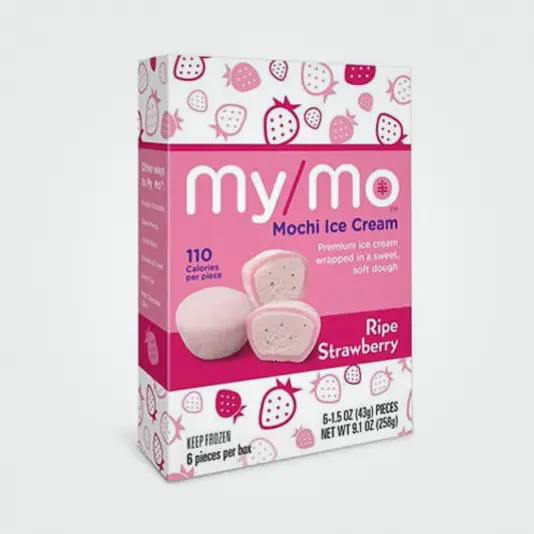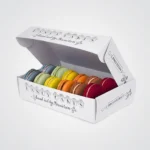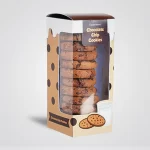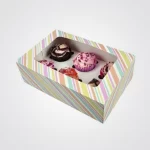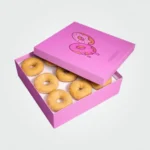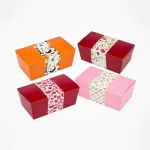Ice Cream Boxes
Custom Ice Cream Boxes
Cherish the cool and creamy essence of your frozen treats with our Custom Ice Cream Boxes. Tailored to perfection, these boxes are designed to keep every scoop, bar, or sandwich fresh, ensuring flavors remain intact and textures stay as intended. The vibrant and captivating designs on our packaging not only make your product stand out but also evoke memories of joyous moments under the sun. Proudly designed and produced in the USA, our Custom Ice Cream Boxes combine durability with aesthetics, making sure that every frozen delight you offer is cradled in style, ensuring a delightful unboxing experience for every customer.
Introduction
Ice cream is one of the most beloved desserts in the United States. According to the International Dairy Foods Association, Americans consume an average of 23 pounds of ice cream per year, making it one of the most popular treats in the country. With such a high demand for this delicious frozen treat, it’s essential to consider the role that packaging plays in maintaining the quality and freshness of ice cream. Packaging is a critical component in preserving the taste, texture, and overall quality of ice cream. The right packaging can help protect the product from external factors such as air, moisture, and light, all of which can impact the flavor and texture of ice cream. In addition, proper packaging can also make it easier to transport and store ice cream, which is crucial for businesses in the food industry.
In this article, we’ll take a closer look at ice cream boxes and their importance in the industry. We’ll explore the different types of ice cream boxes, their key features, and customization options. We’ll also discuss regulatory requirements and best practices for storing and handling ice cream boxes. By the end of this article, you’ll have a better understanding of the critical role that ice cream boxes play in maintaining the quality and freshness of this beloved dessert.
Types of Ice Cream Boxes
When it comes to ice cream boxes, there are several different materials to choose from, each with their own set of advantages and disadvantages. Here’s a closer look at some of the most common materials used for ice cream boxes:
Paperboard
Paperboard is a popular choice for ice cream boxes due to its sturdiness and affordability. It is often coated with a wax or polyethylene layer to prevent moisture from penetrating the box. Paperboard is also biodegradable and can be recycled, making it an environmentally friendly option.
Advantages
Plastic
Plastic is another popular material for ice cream boxes due to its durability and flexibility. It can be molded into different shapes and sizes, making it a versatile option for packaging. Plastic is also moisture-resistant and provides a strong barrier against external elements.
Advantages
Disadvantages
Polystyrene
Polystyrene, also known as Styrofoam, is a lightweight and insulating material that is often used for ice cream boxes. It is excellent at maintaining the temperature of the product and keeping it cold during transport. However, polystyrene is not environmentally friendly and can take hundreds of years to decompose.
Advantages
Disadvantages
Environmental Considerations
When choosing an ice cream box material, it’s essential to consider the environmental impact of the product. Biodegradable and recyclable materials are becoming increasingly popular in the food packaging industry, as they are more sustainable and better for the environment. Some materials, such as polystyrene, are not biodegradable and can take hundreds of years to decompose, making them a less sustainable option. It’s important to choose packaging materials that align with your brand’s values and environmental commitments.
Key Features of Ice Cream Boxes
Ice cream boxes come in various shapes and sizes, with different lid types and insulation features. Here are some of the key features to consider when choosing an ice cream box:
Size and Shape Options
Ice cream boxes come in a variety of sizes, from small individual serving sizes to larger family-sized options. The most common sizes are pint, quart, and gallon. There are also novelty shapes available, such as ice cream cones and bowls, which can be used to create eye-catching displays.
Advantages
Lid Types
The lid is an essential component of ice cream packaging, as it helps keep the product fresh and prevents spillage. There are several different types of lids available, including snap-on, hinged, and resealable. Snap-on lids are the most common, as they are easy to use and provide a secure seal. Hinged lids are convenient for larger containers, as they allow for easy opening and closing. Resealable lids are useful for customers who may not finish the entire container in one sitting.
Advantages
Insulation and Temperature Control Features
Ice cream is a temperature-sensitive product, and it’s essential to choose packaging that can help maintain its optimal temperature. Some ice cream boxes come with insulation features, such as foam inserts or double-walled construction, which can help keep the product cold during transport and storage.
Advantages
When choosing an ice cream box, it’s important to consider the size and shape, lid type, and insulation features that will best suit your needs. These features can help maintain the quality and freshness of your product and make it more appealing to customers.
Design and Customization Options
Ice cream boxes offer excellent branding and marketing opportunities, as they provide a blank canvas for creative design and customization. Here are some design and customization options to consider:
Branding and Marketing Opportunities
Ice cream boxes can be custom printed with your brand logo and messaging, making them a valuable tool for building brand recognition and attracting customers. Logo placement and color choice are essential considerations for branding, as they can help make your product stand out on store shelves.
Advantages
Graphic Design Considerations
Graphic design elements such as color, typography, and imagery can help create a visually appealing and distinctive package design. Color choice can convey different emotions and associations, while typography can help communicate brand personality and tone. Imagery can be used to showcase the product, highlight key ingredients, or create a sense of indulgence and luxury.
Advantages
Customization Options for Different Ice Cream Products
Different types of ice cream products, such as gelato, sorbet, and dairy-free options, have different packaging requirements. For example, gelato may require a shallower container with a wider opening, while sorbet may require a more rigid container to prevent crushing. Customization options such as container size and shape, material choice, and lid type can be tailored to suit different ice cream products and enhance their appeal.
Advantages
When designing and customizing ice cream boxes, it’s important to consider branding and marketing opportunities, graphic design elements, and customization options for different ice cream products. A well-designed ice cream box can help attract customers, build brand recognition, and enhance the overall customer experience.
Regulatory Requirements for Ice Cream Boxes
When it comes to packaging food products like ice cream, there are several regulatory requirements that must be met to ensure the safety and quality of the product. Here are two key regulatory requirements that apply to ice cream boxes:
FDA Requirements for Packaging Materials and Food Contact Substances
The U.S. Food and Drug Administration (FDA) has established guidelines for food packaging materials and food contact substances to ensure that they do not pose a risk to public health. These guidelines include regulations for the types of materials that can be used in food packaging, as well as limits on the amounts of certain substances that can migrate from packaging into food.
Advantages
State and Local Regulations for Labeling and Packaging
State and local regulations may impose additional requirements for labeling and packaging ice cream products. For example, some states may require specific information on the label, such as the ingredients list, nutrition facts, or allergen warnings. Other regulations may pertain to the size or shape of the packaging or the type of lid that can be used.
Advantages
When choosing ice cream boxes, it’s essential to ensure that they comply with FDA regulations for packaging materials and food contact substances. Additionally, it’s important to be aware of any state and local regulations that apply to labeling and packaging. Adhering to these regulations can help ensure the safety and quality of your ice cream products and help avoid costly fines or legal issues.
Best Practices for Ice Cream Box Storage and Handling
Even the best ice cream boxes won’t be effective if they’re not stored and handled correctly. Here are some best practices for storing and handling ice cream boxes:
Proper Temperature and Storage Conditions
Ice cream is a perishable product and requires careful temperature control to maintain quality and freshness. Ice cream should be stored at a temperature of -18°C (0°F) or below to prevent spoilage and ensure that it remains frozen. Additionally, ice cream should be stored in a dry, clean environment to prevent contamination and maintain quality.
Advantages
Recommended Handling Procedures during Shipping and Transportation
Ice cream boxes may be subject to various stresses during shipping and transportation, including temperature fluctuations, vibration, and impact. Proper handling procedures can help ensure that ice cream boxes remain intact and that the ice cream inside stays frozen. Some recommended handling procedures include using insulated packaging, avoiding stacking heavy items on top of ice cream boxes, and ensuring that ice cream boxes are not exposed to direct sunlight or heat.
Advantages
By following these best practices for storing and handling ice cream boxes, you can help ensure that your ice cream products remain fresh and of high quality. Proper temperature and storage conditions, as well as recommended handling procedures during shipping and transportation, can help protect your ice cream products and maintain their appeal to customers.
Conclusion
Ice cream boxes are essential for the ice cream industry as they not only protect and preserve the quality and freshness of the product but also offer branding and marketing opportunities. When choosing ice cream boxes, it’s important to consider the material, size and shape, lid type, insulation and temperature control features, as well as design and customization options. Additionally, complying with regulatory requirements and following best practices for storage and handling can help ensure the safety and quality of ice cream products.
Future of Ice Cream Industry
Looking towards the future, advancements in ice cream packaging technology are likely to continue. For example, there may be increased use of eco-friendly and sustainable packaging materials, such as biodegradable plastics or recycled paperboard. Additionally, there may be new innovations in temperature control and insulation technology, allowing for more effective preservation of ice cream quality during shipping and transportation. Ice cream boxes are a crucial part of the ice cream industry, and choosing the right packaging can make all the difference in maintaining the quality and freshness of your products. By keeping up with trends and advancements in packaging technology and adhering to regulatory requirements and best practices, you can ensure that your ice cream products remain a beloved treat for years to come.




